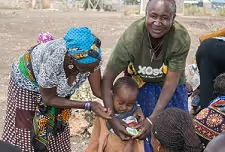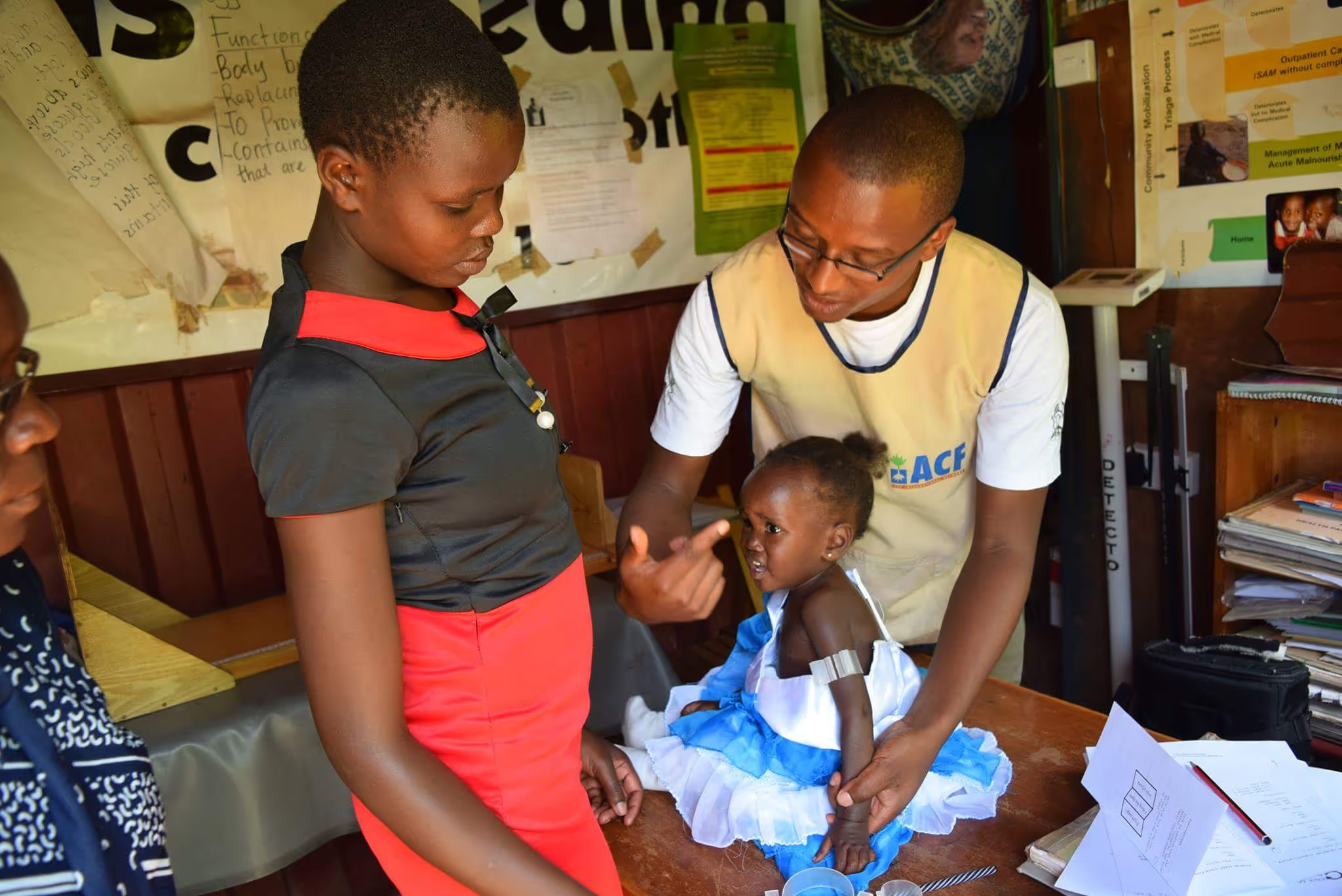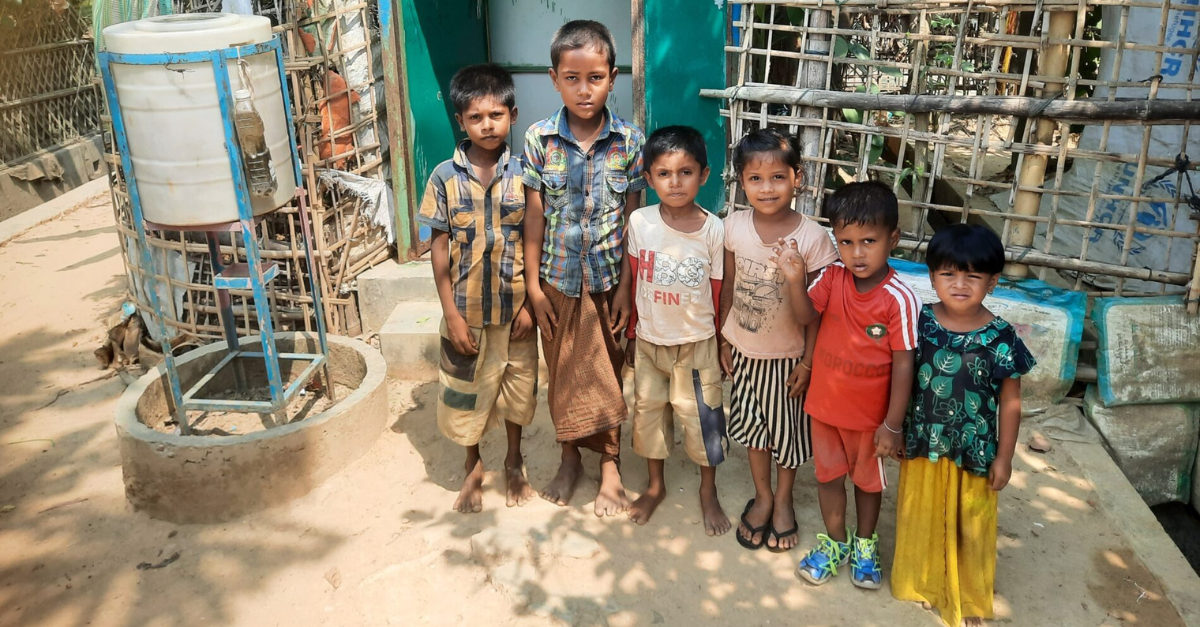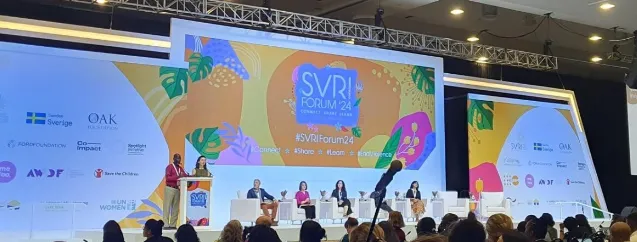Learning from iterative innovation during the Click-MUAC project

The easiest, most practical, means to detect acute malnutrition in young children is to measure and classify mid-upper arm circumference (MUAC). As nutritionists, we have trained countless community health workers and community health volunteers over the years in this straightforward, simple, screening approach. However, like any screening method, it can sometimes face challenges. The approach relies on community health workers or community health volunteers to carry out the MUAC screenings in the communities. These individuals are often juggling multiple community health activities, with little or no financial incentive. This can impact their motivation, and ultimately the frequency of MUAC screenings. In addition, there can be mistakes in the MUAC measurement process, with too tight or too loose measurements being recorded.
It had always puzzled us; why wasn’t there a more standardised way to measure MUAC? Could we develop a new, simplified MUAC measurement device that could help simplify the process of MUAC screening even further? Could a simplified device be used to support the promising approach of training mothers and caregivers to screen for acute malnutrition in their own children, in the comfort of their own homes? On a rainy afternoon, sitting in a London sandwich shop, we explored these ideas with nutrition expert Dr. André Briend, and the Click-MUAC project was born.
What followed was an exciting, fast-moving, and at times challenging, plunge into innovation programming. It was fascinating to witness the birth of an innovation from an idea (a hazy concept relating to the production of a latching bracelet to classify MUAC) to three fully-fledged, functioning plastic prototypes (“Click-MUACs”). It involved familiarising ourselves with processes far outside of our comfort zone (who thought plastic manufacturing could be so complex?) and bringing together experts from multiple fields, including epidemiology, 3D-printing, plastics modelling and public health nutrition.
Guided by our team of experts – Mark Myatt and André Briend - we sought to design a study protocol that could test these prototypes in an operational setting, against a gold standard classification of nutritional status. For the gold standard we used another novel screening device, the universal MUAC tape (“uniMUAC”). This device had recently been developed by a consortium of NGOs and academics led by Médecins Sans Frontières, but had not yet been tested in the field. Data collection for the study was launched in 2016 in Isiolo County, Kenya, through a close collaboration between the Isiolo County Health Management Team, the Kenya Nutrition Information Technical Working Group, and Action Against Hunger. Financial support was provided by Elrha's Humanitarian Innovation Fund (HIF).

The data collection process was smooth, though we did have to extend data collection activities in order to reach our required caseload of severe acute malnutrition cases. Data collection ended in January 2017 and as we started to analyse the data, an interesting picture began to emerge. Not only were mothers able to conduct accurate classifications of their child’s nutritional status, they were able to do it even better than previously reported. All the devices were successful and demonstrated a good ability to both detect and rule out acute malnutrition.
Another interesting development, one we weren’t anticipating, was that the uniMUAC tape performed best overall. The difference in performance was statistically significant, leading us to believe that tweaks to the design of the uniMUAC (including a larger tab and a three-slot buckle) may have increased its sensitivity, compared to traditional versions of the tape. A final element to consider was the cost: a uniMUAC tape could be produced at much lower cost than a Click-MUAC bracelet. Our initial plan for a second-phase piloting of the Click-MUAC bracelets was therefore shelved, in favour of developing a simplified version of the uniMUAC tape to support the “Mother-MUAC” approach – it was pure iterative innovation in action.
Thanks to the HIF’s guidance and flexibility we were able to quickly re-orient the direction of the project, from further production of Click-MUAC bracelets, to the piloting of a simplified uniMUAC tape in selected communities of Isiolo County. We were able to build on the successful collaboration established with the Isiolo County Health Management team and train 3,363 mothers and caregivers on the detection of acute malnutrition with a simplified uniMUAC tape. This second phase of the project also produced valuable information: it demonstrated that mothers were able to use the simplified tape in their own communities, with minimal training and demonstration. Ongoing data analysis for this phase also indicates that mother-led screening may have led to earlier detection of acute malnutrition, as the data demonstrates that mothers brought their children to the health facilities at an earlier stage of the disease.

The tangible impact of this project has been extensive, both for us at Action Against Hunger, but also in Kenya and at a global level. The study results strongly support a broader scale-up of the Mother-MUAC approach, as one of the most promising means to increase treatment coverage for life-threatening acute malnutrition. It has demonstrated that mothers are perfectly capable of being trusted with the detection of acute malnutrition in their own children and that a simplified uniMUAC tape is the best means to support this. Thanks to the evidence and operational experience generated by the Click-MUAC project in Kenya, there are national efforts to develop further guidance on Mother-MUAC and incorporate it into national policy. Simultaneously, at a global level, the Mother-MUAC approach has been firmly placed at the centre of a global push to scale-up the coverage of acute malnutrition treatment.
Looking back on the project, a key lesson for us has been to trust our own innovation ideas, and be creative and flexible when ideas don’t pan out the way we expect them to. Demand for innovation is a great motivator and it was thanks to the enthusiasm of our colleagues, partners, donor, and all the mothers and caregivers of Isiolo County that we were able to design and implement a project that was successful and meaningful.
Stay updated
Sign up for our newsletter to receive regular updates on resources, news, and insights like this. Don’t miss out on important information that can help you stay informed and engaged.
Related articles



Explore Elrha
Learn more about our mission, the organisations we support, and the resources we provide to drive research and innovation in humanitarian response.